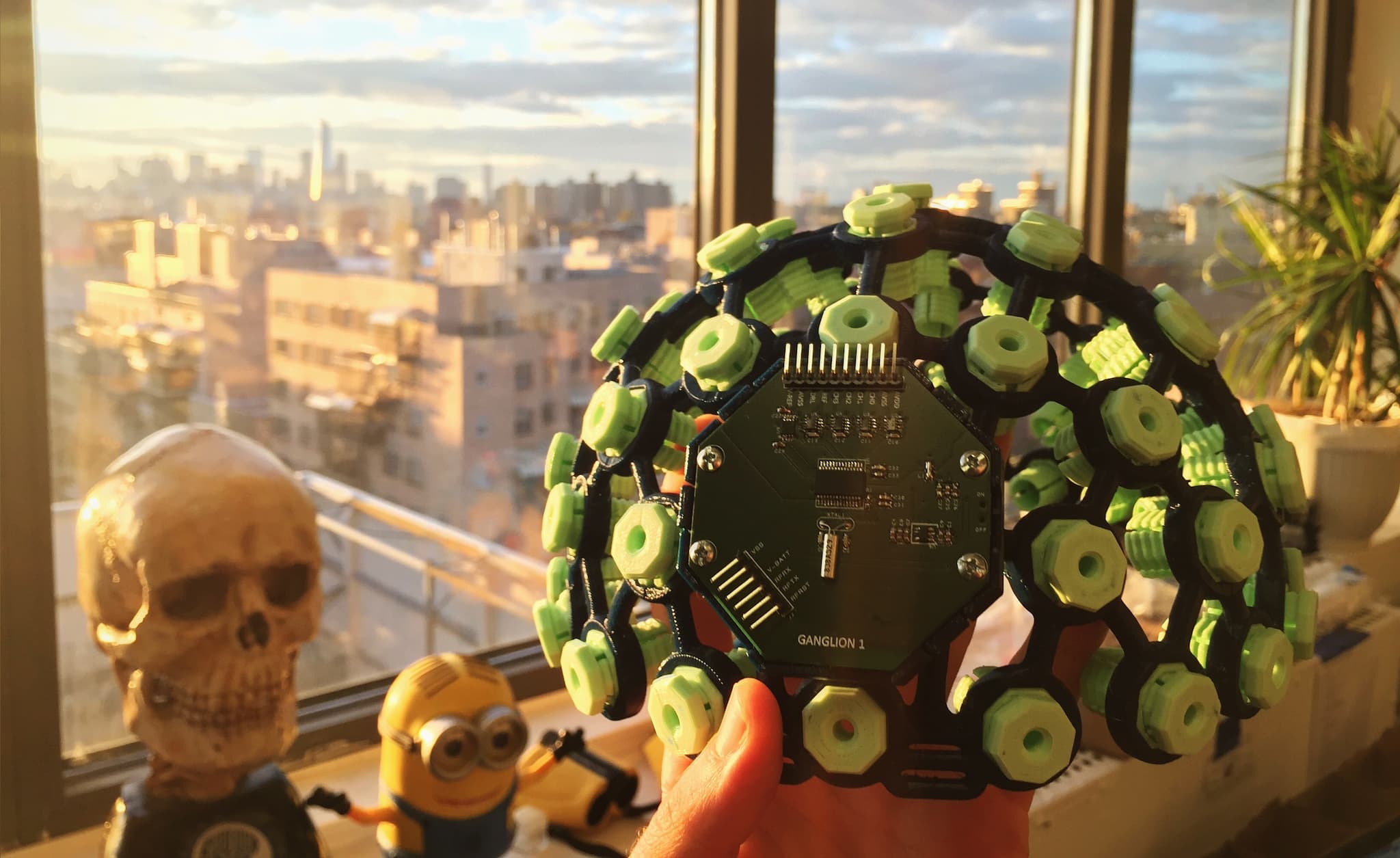Meet OpenBCI
OpenBCI is a company that's dedicated to making biodata available to everyone. In order to do this, they are using Kickstarter as a means of releasing their open-source brain-computer interfacing (BCI) technology.
In essence, BCI allows individuals to use their brainwaves to control an external device, like the robotic hand pictured above. Unfortunately, BCI technology is often exorbitantly expensive. As a result, only top-tier institutions and premier entrepreneurs are able to afford it. That is precisely what OpenBCI aims to change, and it seems that they just achieved a significant part of their mission.
This past week, OpenBCI reached their funding goal on their Kickstarter campaign. To date, they have raised over $93,000 out of their initial $80,000 goal. With this money, the team will be able to accelerate BCI research by producing (what they affectionately call) their "beginner’s kit to human-computer interfacing." Thanks to its affordable price, the kit will allow a host of students and researcher to access previously unattainable BCI technology.
Since they still have 29 days until the end of their campaign, the team is setting new goals and aiming even higher.
The Initial Campaign
The initial campaign was composed of two primary components. The first is the newest version of the OpenBCI 3D-printed EEG headset, known as the Ultracortex Mark IV. The second is the OpenBCI Ganglion, which is a high-quality, low-cost ($99), 4-channel, Arduino-compatible bio-sensing platform.
To break this down a bit more: The Ultracortex Mark IV is a 3D-printable headset that can either be purchased fully assembled or as a DIY kit for self-assembly. The design features dry electrodes that allow for rapid setup (under 60 seconds), and eliminates the need for sticky electrode paste. The Ganglion is an Arduino-compatible, wireless microcontroller. It's able to sample up to 4 channels of brain activity (EEG), muscle activity (EMG), and/or heart activity (ECG). Simblee is used for the on-board microcontroller and wireless connection. This will provide users with programmable flash, 29 GPIO pins, and the ability to update software over the air.
Notably, the team asserts that every Ganglion will be pre-programmed with versatile firmware, meaning that you will be able to start using the technology - and sensing your brainwaves - right out of the box.
The Stretch
The new goal is set at $160,000, doubling the amount of the initial project. If they reach this amount, OpenBCI will be able to release its tDCS (transcranial direct stimulation) shield. The tDCS module will be compatible with both the OpenBCI 32bit boards as well as the new OpenBCI Ganglion. The release of the new shield will allow for the application of electrical neurostimulation while simultaneously recording EEG..
In a press release, OpenBCI co-founder, Conor Russomanno, noted the significance of this add-on: “The addition of the tDCS shield to our campaign adds an exciting element to our goal of unlocking the potential of human-computer interfacing technology. By allowing our OpenBCI community access to experiment with a closed loop system, simultaneously recording and electrically stimulating the brain with small, safe direct currents, we can further explore the capabilities of this technology. We look forward to seeing what we can learn and create together."
The BCI community is already composed of a diverse array of individuals – from gamers and robotics engineers to individuals who are working to better understand neurological conditions. With this campaign, the OpenBCI team is making the technology available to a host of new innovators, bringing BCI to college students, high school classrooms, and anyone with a desire to explore brain-computer interfacing.
The potential uses of this technology are vast, and the project itself is remarkably inspiring. It's furthering science and scientific research. It's the best kind of crowdfunding.
Share This Article
